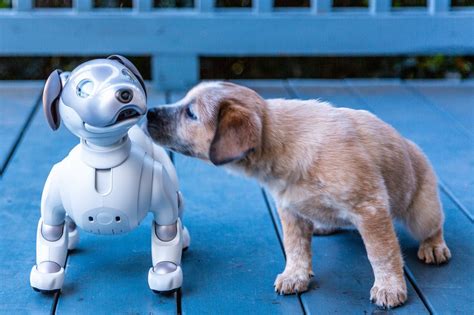Introduction
Artificial intelligence (AI) is rapidly transforming various industries, including the pet care sector. AI-powered robot pets offer a unique blend of companionship, entertainment, and educational value. This comprehensive guide will empower you to program your own AI robot pet, unlocking the world of virtual companionship and beyond.

1. Understanding the Fundamentals of AI Robot Pets
1.1 Key Components
AI robot pets typically comprise the following components:
- Hardware: Physical framework, sensors, motors, and other physical components
- Software: Operating system, AI algorithms, and application software
- Connectivity: Wireless capabilities for remote control and data exchange
- Sensors: Cameras, microphones, and other sensors for environmental perception
- Actuators: Motors and other mechanisms for movement and interaction
1.2 Key Technologies
AI robot pets leverage various technologies to provide lifelike experiences:
- Machine Learning: Algorithms that enable the robot to learn from data and adapt its behavior
- Natural Language Processing (NLP): Understanding and responding to human language
- Computer Vision: Analyzing visual information for object recognition and navigation
- Motion Planning: Algorithms for planning and executing movements
2. Step-by-Step Guide to Programming an AI Robot Pet
2.1 Prerequisites
Hardware and Software:
- Robotic platform or kit with required sensors, motors, and actuators
- Operating system for the robotic platform
- Integrated development environment (IDE) for programming
- AI software development kit (SDK)
Skills:
- Basic programming knowledge in Python, C++, or other languages
- Understanding of AI concepts, including machine learning and NLP
2.2 Programming Process
1. Sensor Integration: Connect sensors and configure their data acquisition
2. Actuator Control: Program the motors and actuators to enable movement and interaction
3. AI Algorithms: Implement AI algorithms for tasks such as object recognition, voice control, and decision-making
4. Interface Development: Design a user interface for controlling and interacting with the robot
5. Testing and Debugging: Thoroughly test the robot’s functionality and address errors
3. Innovative Applications of AI Robot Pets
1. Companionship and Emotional Support: Provide virtual companionship and emotional support to individuals, particularly those in remote areas or with mobility challenges
2. Educational Tool: Facilitate interactive learning experiences for children and adults, covering various subjects from language skills to STEM concepts
3. Healthcare Assistant: Monitor vital signs, provide reminders, and assist with rehabilitation exercises in healthcare settings
4. Research Platform: Enable researchers to study human-robot interaction, AI algorithms, and the impact of AI on society
4. Market Insights
According to a report by Allied Market Research, the global AI robot pet market is projected to reach $14.7 billion by 2025, growing at a CAGR of 14.9%. The increased demand for companionship, educational tools, and healthcare applications is driving market growth.
Case Study:
Sony’s Aibo robot dog, launched in 2018, showcased the potential of AI robot pets. Aibo exhibits realistic behaviors, learns from its interactions, and forms emotional bonds with its owners. Its success highlights the growing market demand for companion AI robots.
5. Tips and Tricks for Programming AI Robot Pets
- Start with a small scope: Focus on implementing essential functionalities first before adding advanced features
- Use libraries and frameworks: Leverage pre-built code and resources to save time and effort
- Test frequently: Regularly test your code to identify and fix bugs early on
- Seek guidance from experts: Consult with experienced programmers, online forums, and documentation for assistance
- Be patient and persistent: Programming AI robot pets requires time, patience, and constant learning
6. Conclusion
Programming AI robot pets offers a rewarding and exciting opportunity to blend technology, creativity, and human-computer interaction. By following the step-by-step guide and leveraging the insights provided in this article, you can unleash the potential of AI robot pets and create virtual companions that enhance our lives in numerous ways. As AI continues to advance, the possibilities for AI robot pet applications are limitless.





















